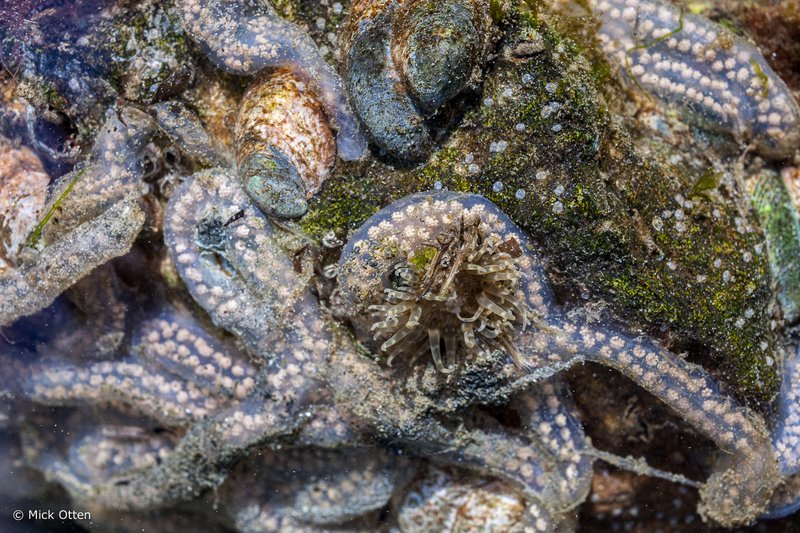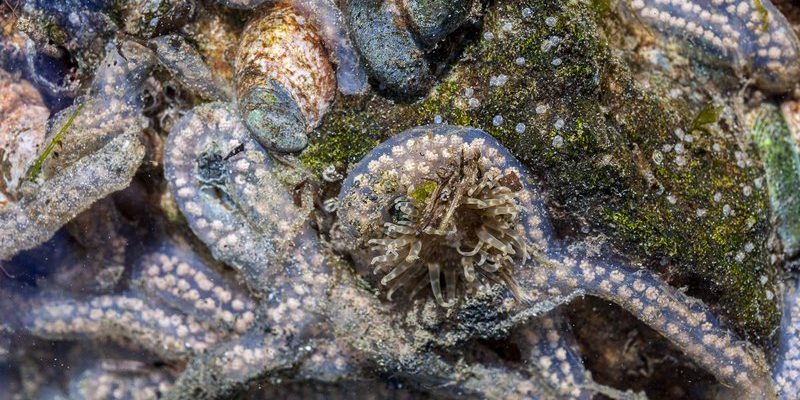
Bootlace worms, also known as *Lineus longissimus,* are some of the longest animals in the world, often stretching over ten feet or more. They thrive in cold environments, typically found in the North Sea and other similar regions. While they may not be your everyday pet or garden critter, their reproduction and egg-laying patterns are worth delving into, especially if you’re interested in marine biology or simply how life persists in all forms. Let’s take a closer look at how these fascinating creatures carry on their legacy.
Understanding Bootlace Worm Biology
Before diving into their reproduction, it’s helpful to understand a bit about bootlace worm biology. These creatures belong to a group known as *nemerteans*, or ribbon worms, which have a soft, elongated body. With their impressive lengths, they can be quite striking to encounter.
One interesting aspect of their biology is how they possess both male and female reproductive organs, a trait known as being hermaphroditic. This means that each bootlace worm can produce both eggs and sperm, which increases their chances of successful reproduction. Honestly, it’s a bit like having two options at a buffet—you can take a little bit of everything!
Unique Physical Features
Bootlace worms are wrapped in a smooth, often vibrant skin that can vary in color. They have a distinctive head with a proboscis, a kind of tubular structure that helps them capture prey. Their bodies are flexible yet tough, allowing them to navigate through sandy or rocky marine environments.
Their unique features extend to their reproductive system as well. The presence of both reproductive organs means they can mate with any other bootlace worm they encounter, maximizing their chances of reproducing. Isn’t nature clever?
Mating Rituals of Bootlace Worms
Now that we have a basic understanding of bootlace worms, let’s talk about their mating rituals. When it’s time to reproduce, these worms engage in a fascinating courtship dance. It’s not the kind of dance you’d see in a ballroom, though—it’s more about intertwining and entangling their long bodies.
During this dance, one worm might release pheromones, scent signals that attract potential mates. This signaling is crucial because it helps them connect in the vast ocean where visibility can be low. Here’s the thing—timing matters! The worms have to sync up, so their bodies can effectively exchange sperm.
Egg-Spermatophore Exchange
Once the mating process is complete, the worms exchange *spermatophores*, which are packets of sperm. This process might sound a bit complicated, but it’s really just nature’s way of ensuring that each worm has a chance to pass on its genes. After the sperm exchange, fertilization occurs internally, and the female part of the worm prepares for egg-laying.
You might be wondering, “How do they lay those eggs?” Well, these worms have a unique approach. Instead of scattering their eggs randomly, they often create a special structure. This can be a gelatinous mass or string-like formation that holds the eggs securely together. It’s like wrapping a gift—keeping everything contained ensures better chances of survival for the hatchlings.
Egg Laying Patterns
Bootlace worms typically lay their eggs in the spring, when water temperatures start to rise. This seasonal timing is crucial, as warmer waters can lead to higher survival rates for the young worms. Like many species in the animal kingdom, bootlace worms have evolved to synchronize their reproductive cycles with environmental changes.
When the female lays her eggs, she can release thousands at once. This large quantity increases the likelihood that some will survive the many challenges in the ocean, such as predation or unfavorable water conditions. Imagine a parent sending out a whole class of kids to school—while not every kid will win an award, some are bound to shine!
The Egg Stage
Once laid, the eggs develop into larvae, which float in the water column for several weeks. During this time, they undergo various stages of development. It’s a bit like being in a cocoon—this stage is crucial for their growth before they settle down to become adult worms.
The larval stage is fascinating because it shows just how adaptable and resilient these creatures can be. They may drift far from where they were born, but nature has its ways of ensuring these little larvae can eventually find suitable habitats.
Challenges in Reproduction
Despite their fascinating reproductive strategies, bootlace worms face challenges. Pollution, climate change, and habitat loss can significantly impact their populations. For instance, changes in ocean temperatures can affect their breeding cycles and timing, which ultimately affects their survival and development.
Furthermore, the delicate balancing act of nature means that various predators—like fish and other marine animals—might prey on bootlace worm larvae. It makes you appreciate how fragile life can be, even for a creature as resilient as the bootlace worm.
Conservation Efforts
Efforts are underway in many regions to protect marine ecosystems, which in turn helps bootlace worms and other aquatic life thrive. Maintaining clean waters, restoring habitats, and monitoring populations are all crucial steps to ensure these fascinating worms continue to reproduce successfully.
Engaging in conservation efforts can make a genuine difference. By supporting marine protection initiatives, we can help preserve these unique organisms and their habitats. It’s a small step that contributes to the larger picture of biodiversity.
Bootlace worm reproduction and egg-laying patterns are a testament to the wonders of nature. From their intriguing mating rituals to the complex life cycle of their offspring, these worms offer a glimpse into the diversity of life beneath the waves. While they may seem like simple creatures at first glance, their reproductive strategies reveal a world filled with adaptation and resilience.
So the next time you think about the creatures that inhabit our oceans, remember the bootlace worm and its impressive life cycle. Every little worm plays a part in the ecosystem, ensuring that life continues in its many forms. Let’s appreciate the beauty in these unique organisms and the intricate ways they bring new life into the world.

